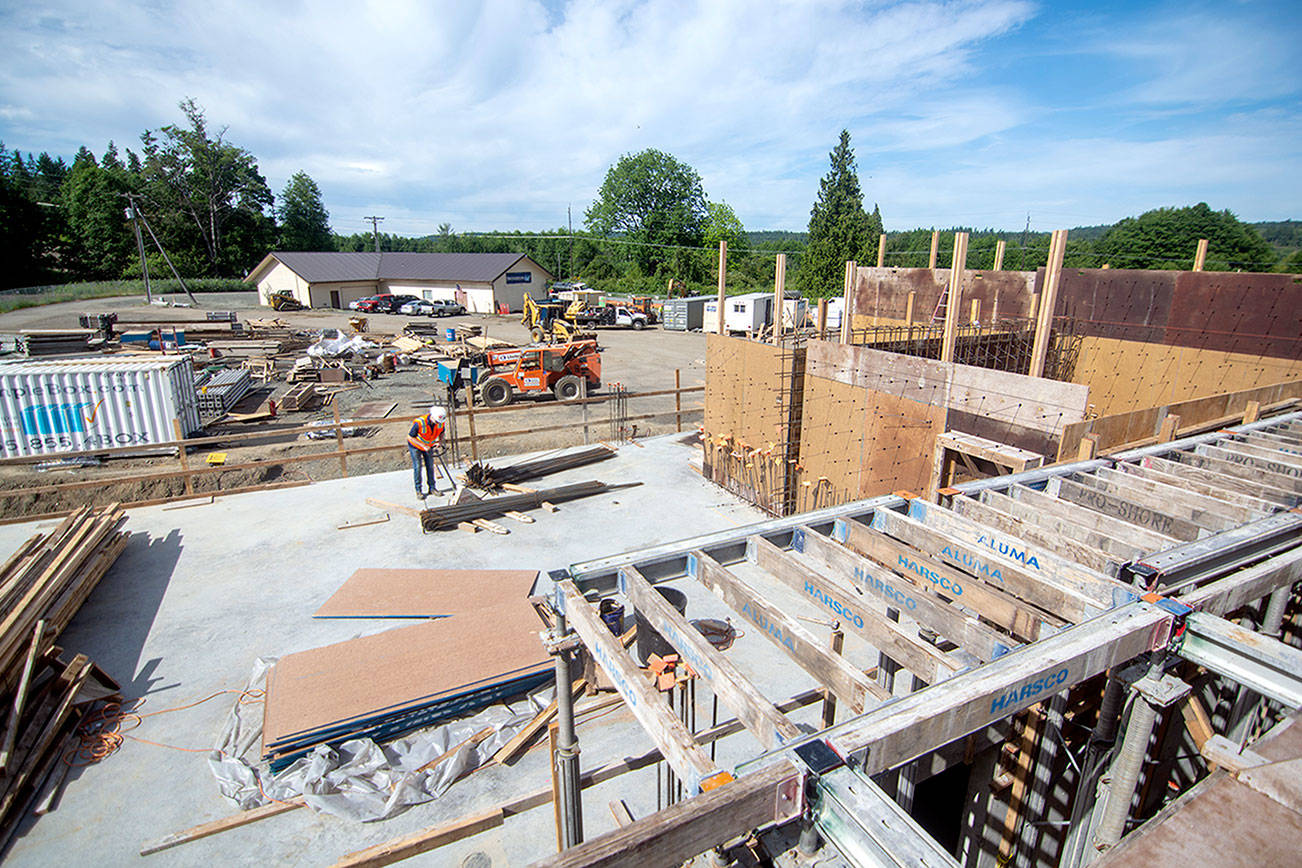A conference center will be included in Phase 2 of the Jamestown S’Klallam Tribe’s new five-story hotel project at 7 Cedars Casino in Blyn, Jerry Allen, casino and hotel CEO, said on June 12.
Allen said the conference center will seat between 600 and 800 participants and be built after Phase 1, a $39 million four-star hotel, opens — expected to be up by May 1 next year. Workers broke ground on the project Feb. 28.
“We are on target,” Allen said. “We’ve been test riding this thing for a long time to make sure we don’t have any hiccups.”
Allen gave an update on the project to about 70 people at a Port Angeles Regional Chamber of Commerce luncheon at the Red Lion Hotel in Port Angeles — which is now the largest hotel in Clallam and Jefferson counties with 187 rooms.
The Phase 1 portion of the casino hotel under construction on the Jamestown tribal property off U.S. Highway 101 in Blyn will employ about 70 workers, Allen said.
Phase 1 will consist of a main floor and a four-story tower with 100 rooms, each 420 square feet to more than 1,000 square feet.
It will include 62 rooms with two queen-size beds, and several business suites that will be electronic-device friendly with “outlets on top of outlets,” he said.
Hotel accommodations will cost at least $275 a night, Allen said.
Phase 1 will have two conference meeting spaces totalling about 230 seats.
“Those are the sort of things that will help sell beds,” he said.
It’s being built west of the casino off U.S. Highway 101.
“Phase 1 is really more adult-oriented, and it’s really not meant to be child-oriented,” he said.
“That’s why you don’t see a pool, you don’t see those things because you’ve really got to understand the revenue per room,” he said. “Revenue per room is the most important thing.”
Phase 2 won’t be built for at least five years and includes construction of 150 to 200 more rooms in a second four-story tower, Allen said. That would make it the largest hotel on the North Olympic Peninsula, based on current facilities.
Phase 2 also will include construction of a spa and pool.
The second phase will broaden the hotel’s market from the Peninsula and Puget Sound to Vancouver to Portland, Ore., Allen said in a later interview.
“We have to be able to capture that audience out there that’s not just your average player,” he said.
The hotel will generate a positive change in revenue of “close to 30 percent” on the casino property, Allen said.
The only definite timeline applies to Phase 1, although it’s more a question of when, not if, the conference center will be built, Allen said.
“There’s no doubt about it” that the conference center will be built, he said.
“In five years, we’ll got back to the bank to see how we’re repaying the debt,” he said.
“We need extra rooms to fill that convention space.
“Those two go together.”
Phase 3 will add 100 more rooms in a third tower, making the total about 400 rooms, Allen said.
Cost estimates for Phases 2 and 3 have not been determined, he added.
At least one glass elevator is on the outside of the Phase 1 tower.
Coast Salish art will be situated throughout the hotel, from the walls to the carpet design.
The hotel will feature a 45-foot totem pole at the entrance and building panels 18 feet tall. Room balconies will be protected with railings carved as paddles.
Works from Native American artists will be on display throughout the hotel on a rotating basis.
Each room will have basically an iPad “meant to guide your experience” by enabling guests to access room service and housekeeping without having to pick up a room phone.
“The whole idea is to streamline the experience and make it easier,” he said.
“We’re not selling rooms, we’re selling an experience.
“We want that experience to be special.”
Construction will include “a completely new traffic alignment” and a loop road from the back of the casino to the tribe’s Longhouse Market & Deli east of the casino that’s nearly complete, Allen said.
Other infrastructure includes an ongoing $8.5 million sewer-line project stretching up Highway 101 that will enable future phases of the hotel project to reach fruition, he added.
“Eliminating drainfields around Sequim Bay is the best thing possible,” Allen said.



